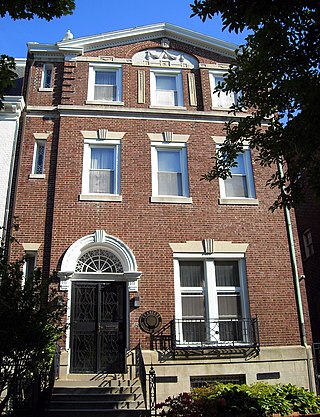Related Research Articles

The United Arab Republic, or simply the Arab Republic or Arabia, was a sovereign state in the Middle East from 1958 until 1971. It was initially a political union between Egypt and Syria from 1958 until Syria seceded from the union after the 1961 Syrian coup d'état. Egypt continued to be known officially as the United Arab Republic until 1971.

Martial law is the imposition of direct military control of normal civil functions or suspension of civil law by a government, especially in response to an emergency where civil forces are overwhelmed, or in an occupied territory.
As a result of the Syrian Civil War since 2012, there are at least two flags used to represent Syria, used by different factions in the war. The incumbent government of the Syrian Arab Republic led by the Ba'ath Party uses the red-white-black tricolour originally used by the United Arab Republic, while Syrian opposition factions such as the Syrian National Coalition use the green-white-black tricolour known as the ''Independence flag'', first used by Mandatory Syria.

The Federation of Arab Republics was an unsuccessful attempt by Muammar Gaddafi to merge Libya, Egypt and Syria in order to create a unified Arab state. Although approved by a referendum in each country on 1 September 1971, the three countries disagreed on the specific terms of the merger. The federation lasted from 1 January 1972 to 19 November 1977.

The Mutawakkilite Kingdom of Yemen, also known as the Kingdom of Yemen or simply as Yemen, or, retrospectively, as North Yemen, was a state that existed between 1918 and 1962 in the northwestern part of what is now Yemen. Its capital was Sana'a until 1948, then Taiz. From 1962 to 1970, it maintained control over portions of Yemen until its final defeat in the North Yemen Civil War. Yemen was admitted to the United Nations on 30 September 1947.

The Constitution of Egypt has passed over a long period of evolution from the liberal constitution of 1923 to the contemporary constitution.
The Constitution of 1923 was a constitution of Egypt from 1923–1952. It was replaced by the Constitution of 1930 for a 5-year period from October 1930 before being restored in December 1935. It adopted the parliamentary representative system based on separation of and cooperation among authorities. The Parliament of Egypt was a bicameral system made up of the Senate and the Chamber of Deputies.
The Provisional Constitution of the United Arab Republic or the Constitution of 1958 was the constitution for the short-lived political union between Egypt and Syria known as the United Arab Republic (UAR). This 74-article provisional constitution was formulated on 5 March 1958 and lasted until the Syrian coup d'état of 28 September 1961.

Egyptian nationality law is regulated by the Constitution of Egypt, as amended; the Egyptian Nationality Law, and its revisions; and various international agreements to which the country is a signatory. These laws determine who is, or is eligible to be, a national of Egypt. The legal means to acquire nationality, formal legal membership in a nation, differ from the domestic relationship of rights and obligations between a national and the nation, known as citizenship. Egyptian nationality is typically obtained under the principle of jus soli, i.e. by birth in Egypt, or jus sanguinis, born to parents with Egyptian nationality. It can be granted to persons with an affiliation to the country, or to a permanent resident who has lived in the country for a given period of time through naturalization.
The History of Republican Egypt spans the period of modern Egyptian history from the Egyptian Revolution of 1952 to the present day, which saw the toppling of the monarchy of Egypt and Sudan, the establishment of a presidential republic, and a period of profound economic, and political change in Egypt, and throughout the Arab world. The abolition of a monarchy and aristocracy viewed widely as sympathetic to Western interests, particularly since the ousting of Khedive Isma'il Pasha, over seven decades earlier, helped strengthen the authentically Egyptian character of the republic in the eyes of its supporters.
The Arab Cold War was a period of political rivalry in the Arab world from the early 1950s to the late 1970s as part of the broader Cold War. The generally accepted beginning of the Arab Cold War was the Egyptian revolution of 1952, which ultimately led to Gamal Abdel Nasser becoming President of Egypt in 1956. Thereafter, newly established Arab republics defined by revolutionary secular nationalism, and largely drawing inspiration from Nasser's Egypt, were engaged in political rivalries of varying degrees of ferocity with conservative traditionalist Arab monarchies, led chiefly by Saudi Arabia. The approximate end point of this period of internecine rivalry and conflict is generally viewed as being the 1979 Iranian Revolution, which culminated in the installation of Ayatollah Ruhollah Khomeini as the leader of Iran's theocratic government. Thereafter, the bitterness of intra-Arab strife was eclipsed by a new era of Arab-Iranian tensions.

The Second Syrian Republic—officially the Syrian Republic from 1950 to 1958 and the Syrian Arab Republic from 1961 to 1963—succeeded the First Syrian Republic that had become de facto independent in April 1946 from the French Mandate. The Second Republic was founded on the Syrian Constitution of 1950, which was suspended from 1953 to 1954 under Adib Shishakli's strongmanship, and later when Syria joined with the Republic of Egypt in forming the United Arab Republic in 1958. The Second Republic resumed when Syria withdrew from the union in 1961. In 1963, the Syrian Ba'athist Party came to power in a bloody military coup, which laid the foundations for the political structure in Syria to the present day.

The Embassy of Barbados in Washington, D.C. is the primary diplomatic mission of Barbados to the United States of America, and the Organisation of American States (OAS). It is maintained by Ministry of Foreign Affairs and Foreign Trade Barbados. The present Ambassador is Noel Anderson Lynch, appointed on October 1, 2018, who replaced Selwin Charles Hart.

The history of Egypt under Gamal Abdel Nasser covers the period of Egyptian history from the Egyptian Revolution of 1952, of which Gamal Abdel Nasser was one of the two principal leaders, spanning Nasser's presidency of Egypt from 1956 to his death in 1970. Nasser's tenure as Egypt's leader heralded a new period of modernisation and socialist reform in Egypt, along with a staunch advocacy of pan-Arab nationalism, and developing world solidarity. His prestige in Egypt and throughout the Arab World soared in the wake of his nationalisation of the Suez Canal Company in 1956, and Egypt's political victory in the subsequent Tripartite Aggression, but was damaged badly by Israel's successful invasion and occupation of Egyptian, Palestinian, and Syrian territory in the Six-Day War of 1967.
The Constitution of 1879 was an abortive attempt by the prime minister to promulgate a constitution for Egypt in 1879. It failed when the khedive, Isma'il Pasha, was toppled by the British that year.
The Fundamental Ordinance of 1882 was a constitution of the Khedivate of Egypt, an autonomous tributary state of the Ottoman Empire. It followed an abortive attempt to promulgate a constitution in 1879. The document was limited in scope and was effectively more of an organic law of the Consultative Council to the khedive than an actual constitution.
The Constitution of 1930 was the constitution of Egypt from October 1930 to December 1935. It replaced the Constitution of 1923 until that constitution was restored in 1935.
The Constitution of the United Arab Republic or the Constitution of 1964 was the provisional constitution of Egypt from 1964 to 1971. It replaced the Provisional Constitution of the United Arab Republic of 1958 following the dissolution of the union of Egypt and Syria as the United Arab Republic. It was in turn replaced by the Constitution of 1971.
References
- 1 2 Harvey Henry Smith. Area Handbook for the United Arab Republic (Egypt). U.S. Government Printing Office, 1970. p. 193.
- ↑ Harvey Henry Smith. Area Handbook for the United Arab Republic (Egypt). U.S. Government Printing Office, 1970. p. 194.